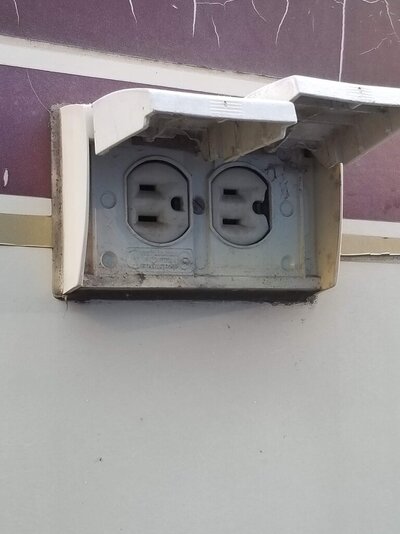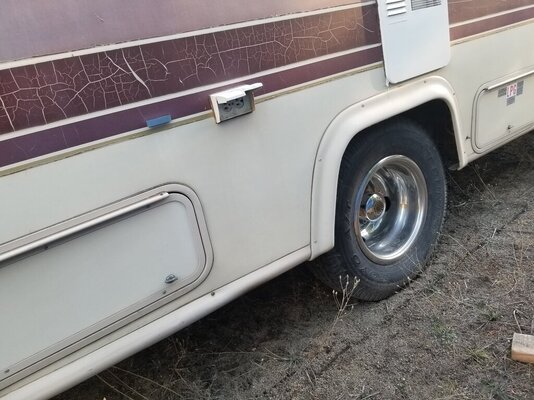Something this old then a PO could have cut the original shore power cord off or removed it for whatever reason.
Yes, start at the circuit breaker box, probably over the cooktop or in a top cabinet but could be anywhere. Near that will be where the shore power cable went through the wall. It should be a small 4 or 5 inch square door.
If there is no cable then you will need to instal one into the circuit breaker as a Main In.
I had a camper I exclusively boondocked in. I took the shore power cord out and just left a very short, cant-even-get-out-the-door plug so i could plug in if I had to - with an extension cord. I sold it like that, so possibly you bought mine.. lol.
The shore power cord is big and bulky like a garden hose.
There should still be the original access door though.
That outlet in your pic has nothing to do with powering up the RV though.
Yes, you can backwards power the RV through that outlet. That outlet is just one circuit of probably 3-5 circuits on the main panel. The air conditiner will have one all to itself and the outles throughout will have a circuit and maybe the fridge gets its own circuit, and the lights another, or lights could be with the outlets. Similar to your house, but different that it is not room but rather items that get a circuit. Why? because they built it with a circuit breaker panel that has all these available circuits and why not...
Likely all these circuits are 15 amps at best. How many amps is just your roof AC? Your fridge?
IF you backwards power the camper, without shocking yourself, then all the power for the camper will be going through this outlet's 15 amp circuit wiring that is not meant to handle the full loads of everything on the camper running at once. All good and fine unless you exceed the 15 amps and the very old wiring is overloaded, gets hot and causes a fire inside the walls of your camper and burns it down to the ground, or at least causes more damage than the camper is worth.
Yes, if you crank generator with the outlet plugged into the house then there is potential for issues. On this old of a rig it might have a mechanical switch that chooses generator power or house power. It could be that turning one on will flip the other one off at the same time, so in such a case you cannot feed generator power into the house if the shore power is selected BUT if the generator power has to be selected then you will be feeding 120 into the generator and 120 generator power into the house, something will give pretty quick and be ugly. Be careful that this rig might have kooky wiring given that you are already missing the much-needed shore power plug.
If you are powering your house during power outage and did not disconnect the house from the street then you can electrocute a lineman trying to fix it and you will be in jail for a long long time for this.
Yet, your house will probably have a fire from the wiring overheating. DOn't power your house through an outlet EVER, but you can probably power an RV since RV's just do not demand enough power to burn wiring. I know a lot will disagree as they like to just say because it could happen to a big rig that it will happen to every single rig in the world. Looking at yours... probably not. I still would not advise you attempt to do this just based on the fact you are asking. If you are not an electrician then keep looking for the proper shore line power cord, or buy one and install it into the circuit breaker box properly, that is really the easiest way. I do not use the male to male plug ever. I have years ago on an inverter, but just dont do it because it just takes one careless moment or laps of concentration and you are worm food...


